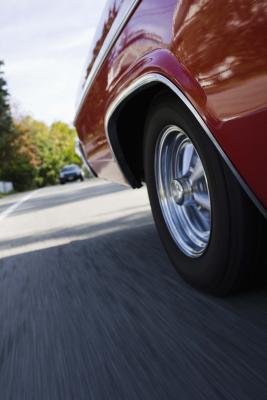
Toe, camber, and caster are words associated with wheel alignment. While toe and camber are easy to physically see by looking at the wheels of a vehicle, caster can be difficult to understand. There is a pivot point on wheels that turn to steer a car. Caster is the term that refers to the angle of this pivot point. If the pivot it to the front of the car, then the caster is at a positive angle, and if it is to the rear of the car, it is at a negative angle. The steps here are for a front-wheel drive car with slotted mounting upper ball joints.
Determine the amount of caster for your vehicle. This can be found in the vehicle specifications section of the owner's manual or in tune-up and repair guides for your vehicle.
Attach the caster gauge to the right front wheel. Turn the steering wheel to the right until the wheel has turned twenty degrees.
Make sure the gauge is level. Set the adjustable caster bubble on the gauge to zero.
Turn the steering wheel to the left, until it is twenty degrees past straight ahead. Make sure the gauge is level, and note the location of the bubble. Write this number down, as it is the amount of caster in this wheel.
Repeat the above steps for the left front wheel.
Adjust the caster by moving the upper ball joint to the front or rear of the car. Loosen the upper ball joint with a socket and driver to be able to move it in the mounting slot. If positive caster is needed, move the ball joint to the rear of the car. Likewise, if negative caster is needed, move the ball joint to the front of the car. Tighten the ball joint in the proper location.